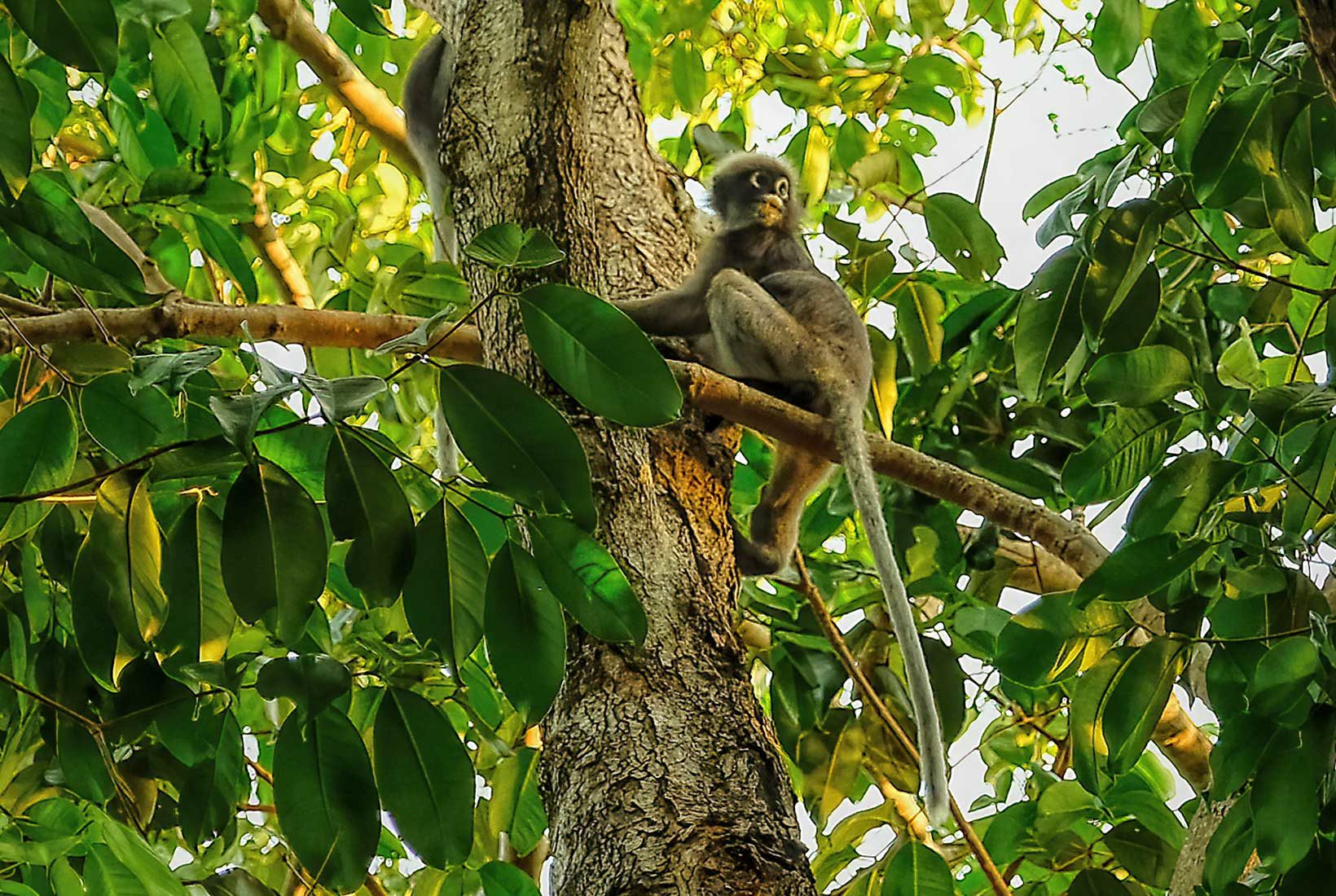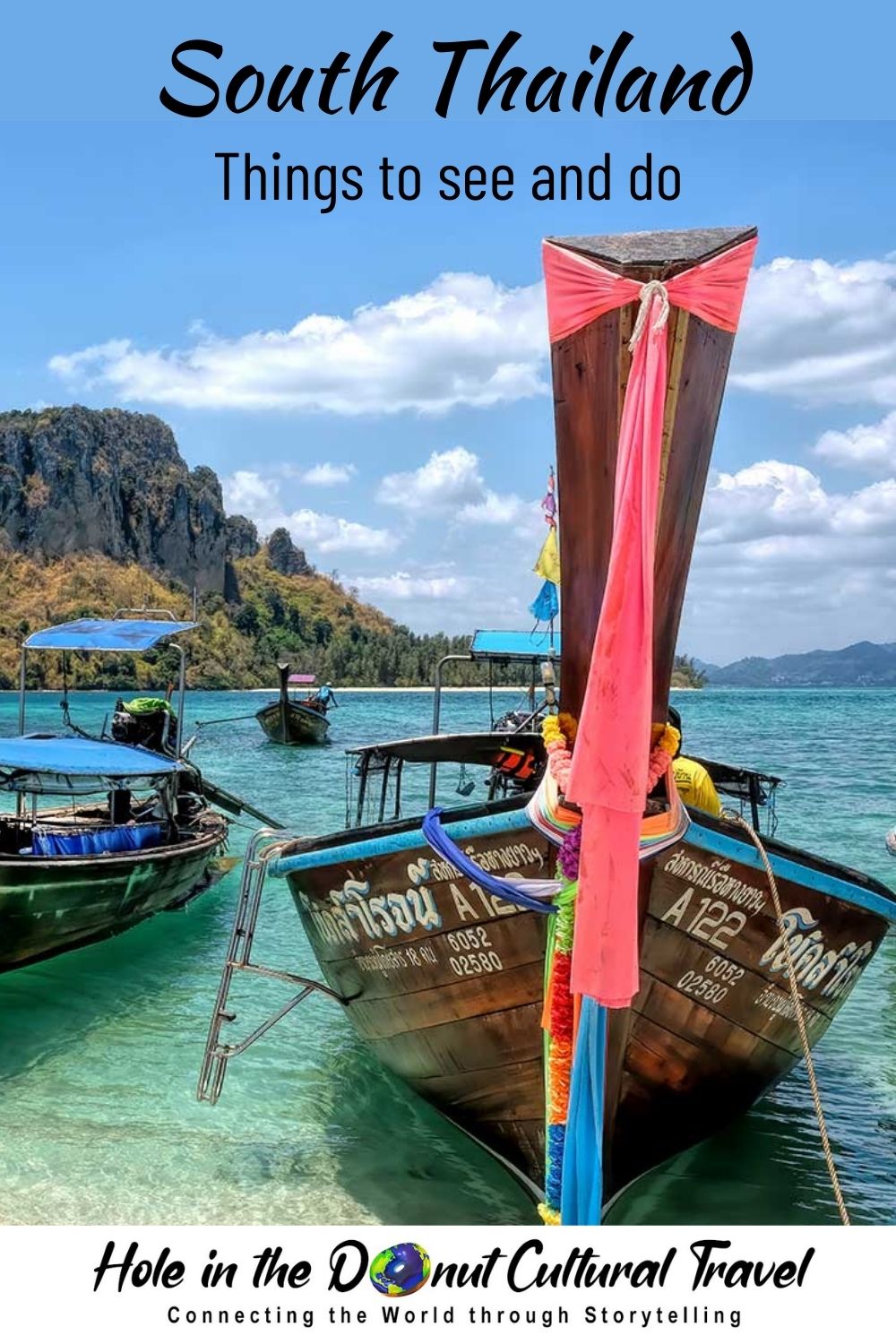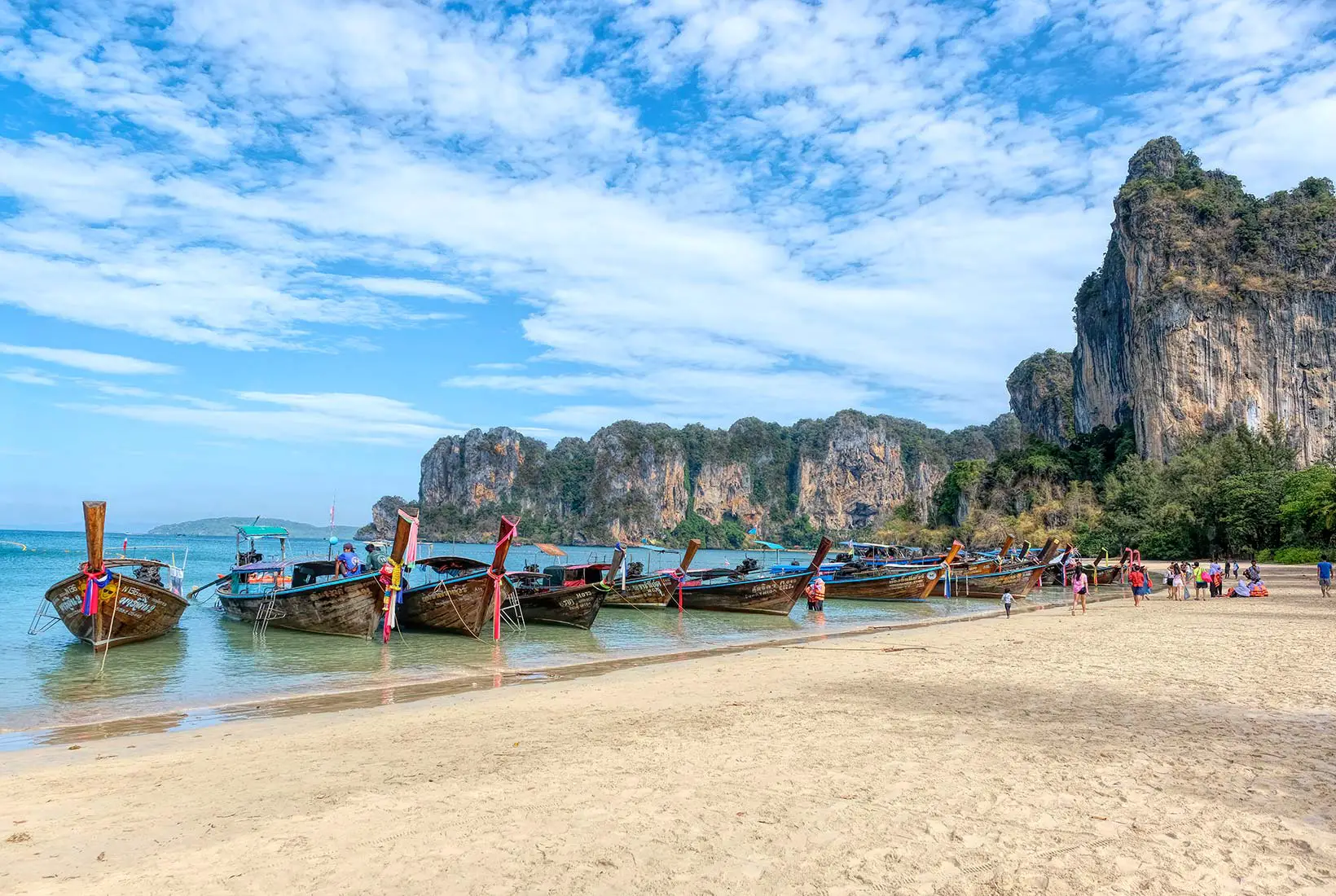Every spring, when farmers burn their fields, a thick blanket of smoke descends upon my home in Chiang Mai, Thailand. Most years, I’m traveling at this time, but this year COVID-19 put a crimp in my normal schedule. I could leave, but if I did, I couldn’t come home. I thought I could tough it out. My itchy, watery eyes weren’t too bad. Even my stuffed-up nose was tolerable. But soon, I couldn’t even take my regular daily walks because the smoke burned my throat. Then Doi Suthep Mountain, a 15-minute drive away, completely disappeared. I decided enough was enough. I might not be able to leave the country, but smoke season was the perfect excuse to visit Railay Beach in Krabi, a province in south Thailand.
I’d always wanted to visit Railay Beach in Krabi. With its powdery sand, turquoise bay, and surrounding Karst limestone cliffs, it is one of the most popular beach destinations in Thailand. Photos feature stunning landscapes, gorgeous resorts, and exquisite sunsets. But what many people don’t know is that these world-class photos are all taken from Railay Beach West. There are actually two Railay Beaches, located on the east and west side of a narrow peninsula that is only accessible by boat. These two crescent-shaped beaches couldn’t be more different. Railay Beach East is muddy and rock-strewn, with thick mangroves along the shore. A few hotels, shops, and rock climbing schools line the waterfront, and a long floating dock allows speedboats and longtail boats to drop off passengers. The eastern beach is every visitor’s first impression, and it is anything but impressive.
After a short flight, a shuttle van delivered me to the ferry terminal in Krabi Town. I waded out into the warm water, luggage in hand, climbed a rickety set of metal stairs up to a barge, and picked my way across the deck in total darkness. On the far end of the barge, a deck hand helped me step down into a creaking wooden longtail boat. Half an hour later we pulled up to the floating dock, which was undulating wildly in rough seas. Thank goodness it was dark and a golf cart was waiting to whisk me to Railay Bay Resort and Spa on the western side of the peninsula. If not, I might have turned right around and taken the boat back to town.
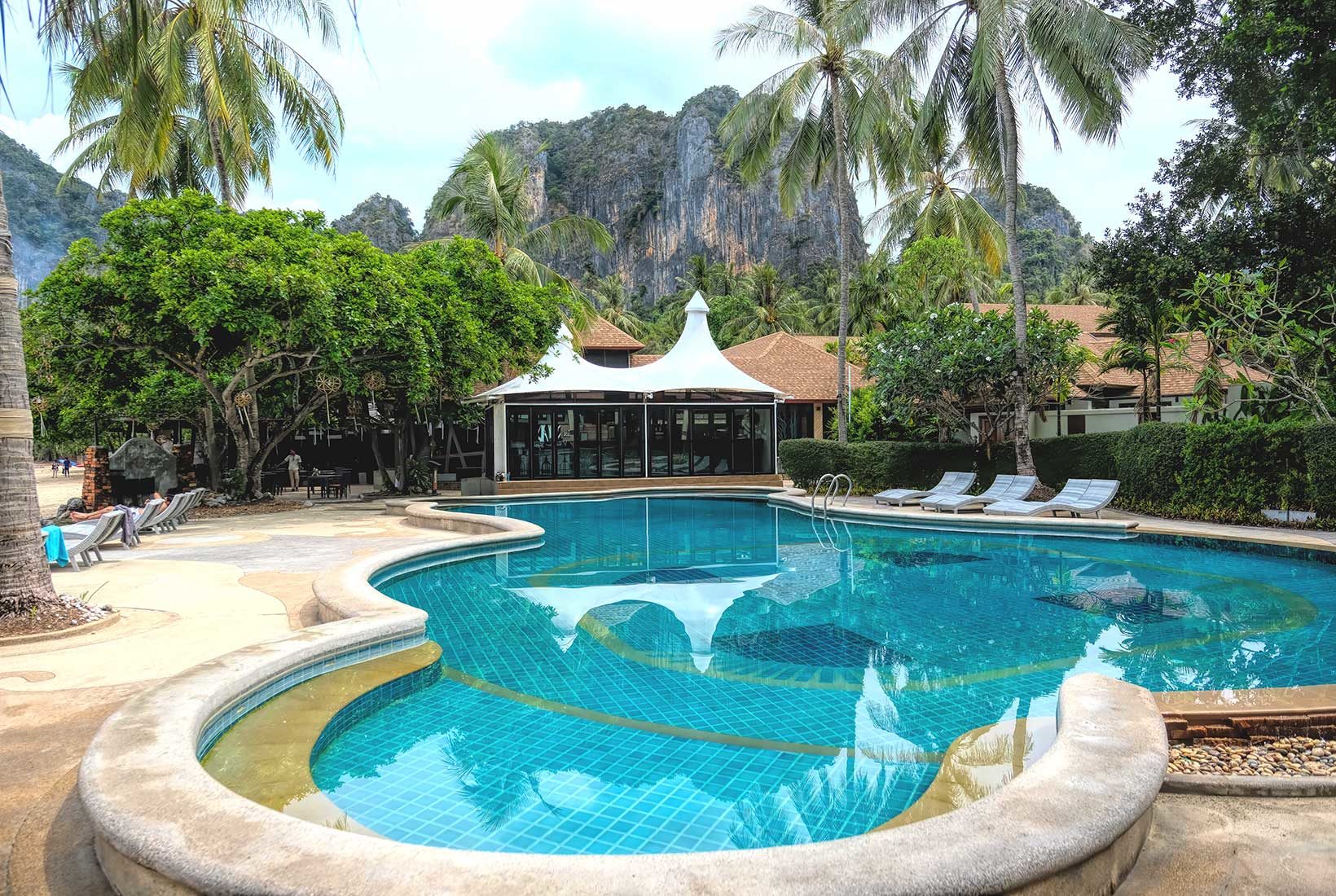
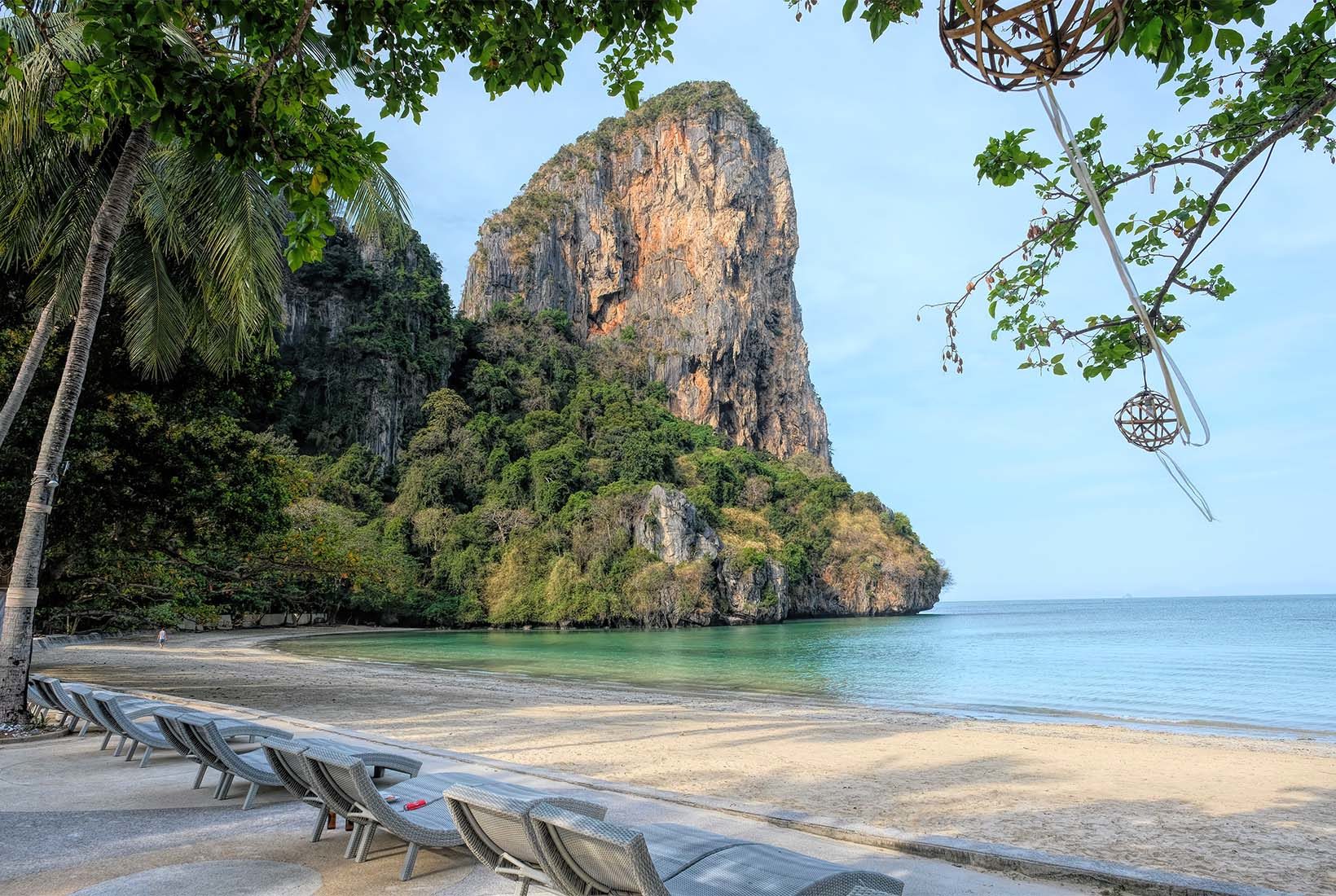
The next morning I strolled down to the restaurant for their buffet breakfast. The views from the open air deck were spectacular. The wide swath of beach sparkled and puffy white clouds sailed across a robin’s egg blue sky. Jungle-clad limestone spires rose on both ends of the beach, forming a perfect, secluded enclave. At the water’s edge, a row of longtail boats, with colorful ribbons decorating their painted prows, waited patiently to take passengers to secluded offshore islands. This was more like it!
Truthfully, there’s not a lot to do at Railay Beach, but that’s sort of the point. I walked along the beach, picking up shells, and explored the “walking street” that connects the western side of the peninsula with the east side. During the afternoon I commandeered a poolside chaise lounge and dozed off under the tropical sun. When I awoke, the tide had gone out, exposing a wide swath of land. Curious, I picked my way between exposed boulders, peeking into crevices and caves in the limestone cliffs, until the muddy seabed floor became so slick that I couldn’t keep my balance. At the seafront restaurant at Rayavadee Resort, I dug into an order of their amazing Tempeh skewers as a golden sun kissed the sea. It was the perfect ending to a perfect day.
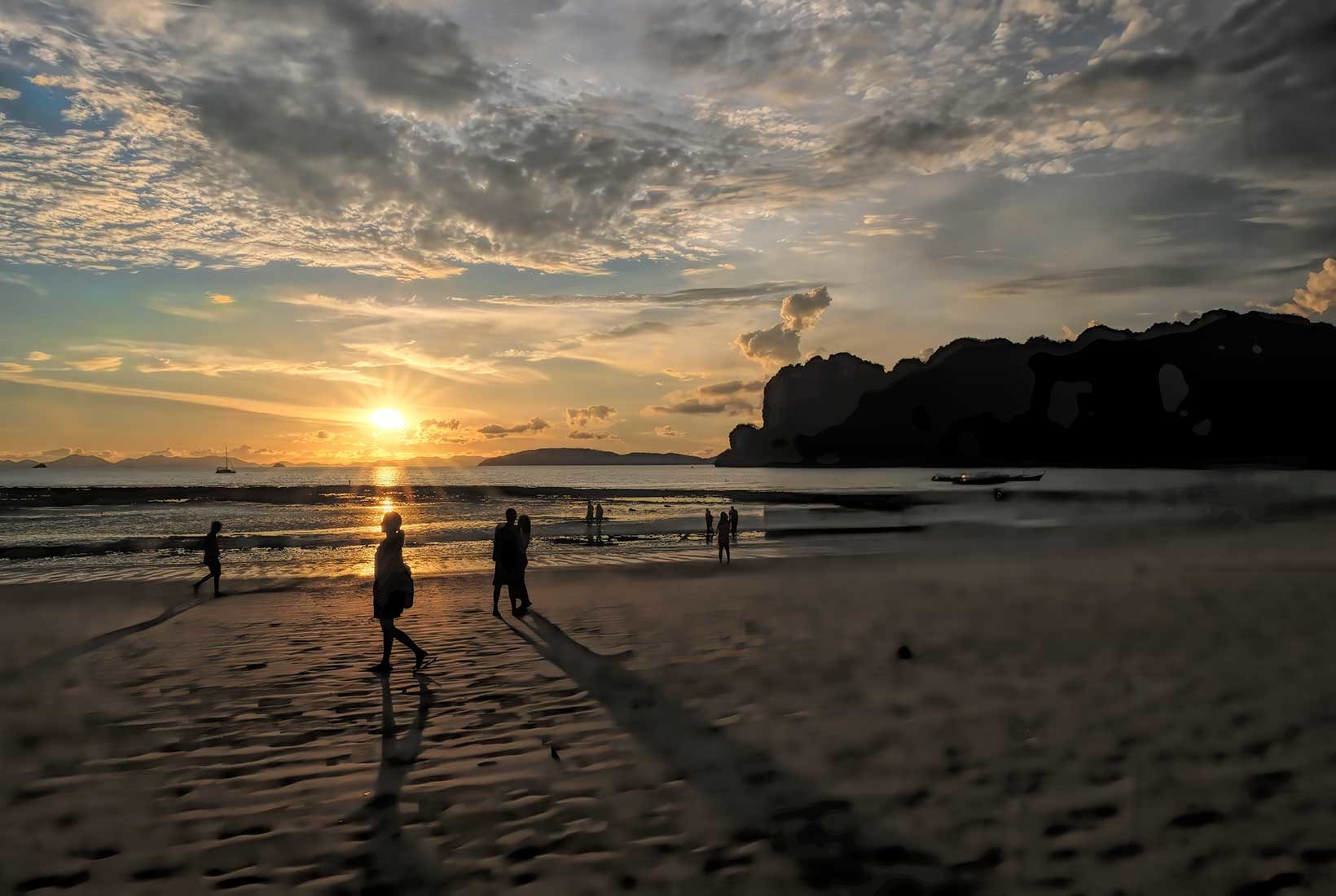
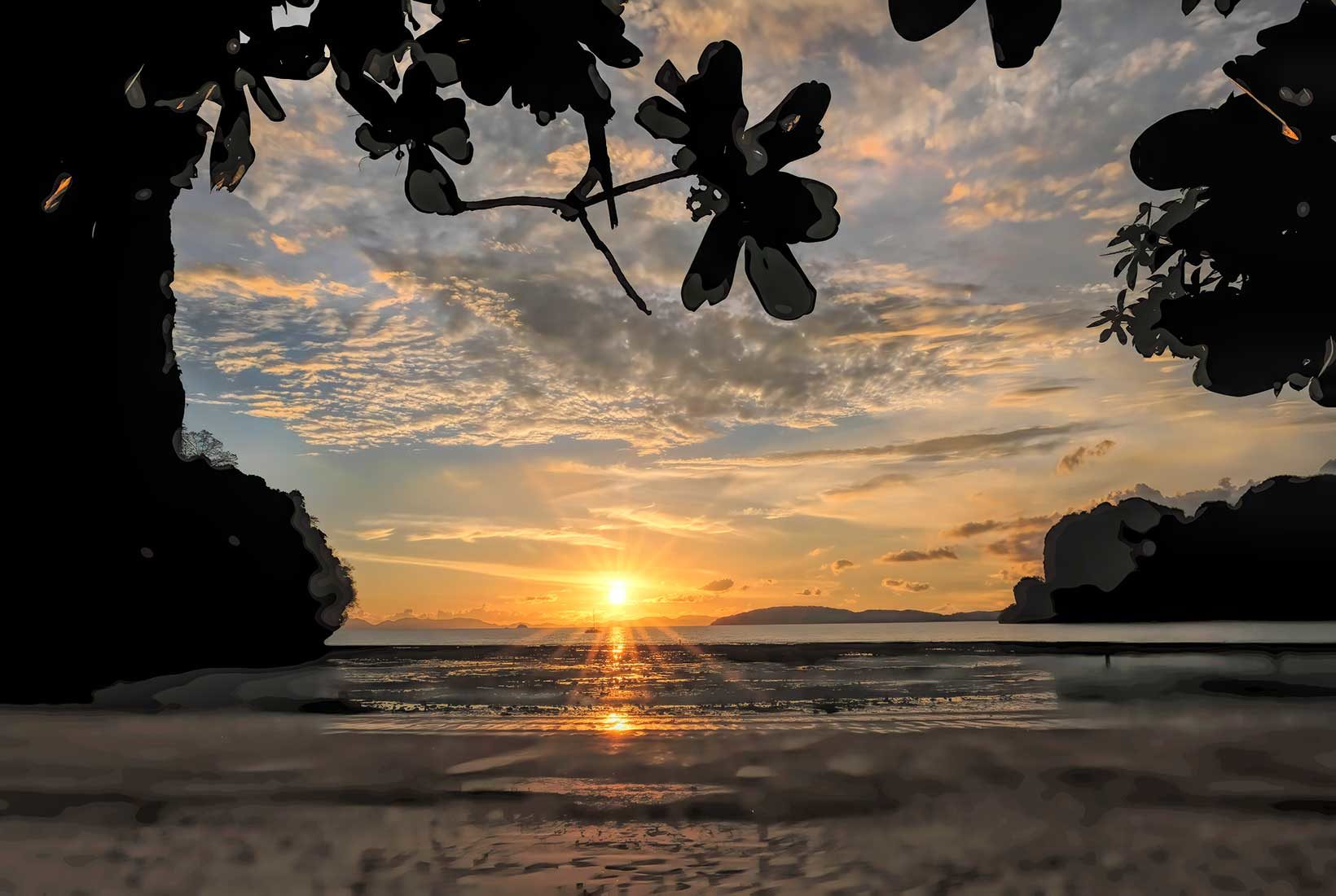
Another day I took a four-island speedboat tour. The Andaman Sea is rife with islands just begging to be explored. Some are quite large, with towns and villages. But the majority are tiny specs of sand and jungle or uninhabitable rocky outcrops. Our first stop was at Koh Poda (Koh is the Thai word for island and it is pronounced gawh). Slightly bigger than a spec, Koh Poda is small enough to walk around in less than an hour. A sole beach bar offers cold drinks and snacks, and the few bungalows that make up Poda Island Resort offer pricey accommodations for those who want to stay overnight and make like Robinson Crusoe. The highlight, however, is the island’s sugar-fine sand beach, with a spectacular view of a limestone stack that thrusts abruptly up from the seafloor.
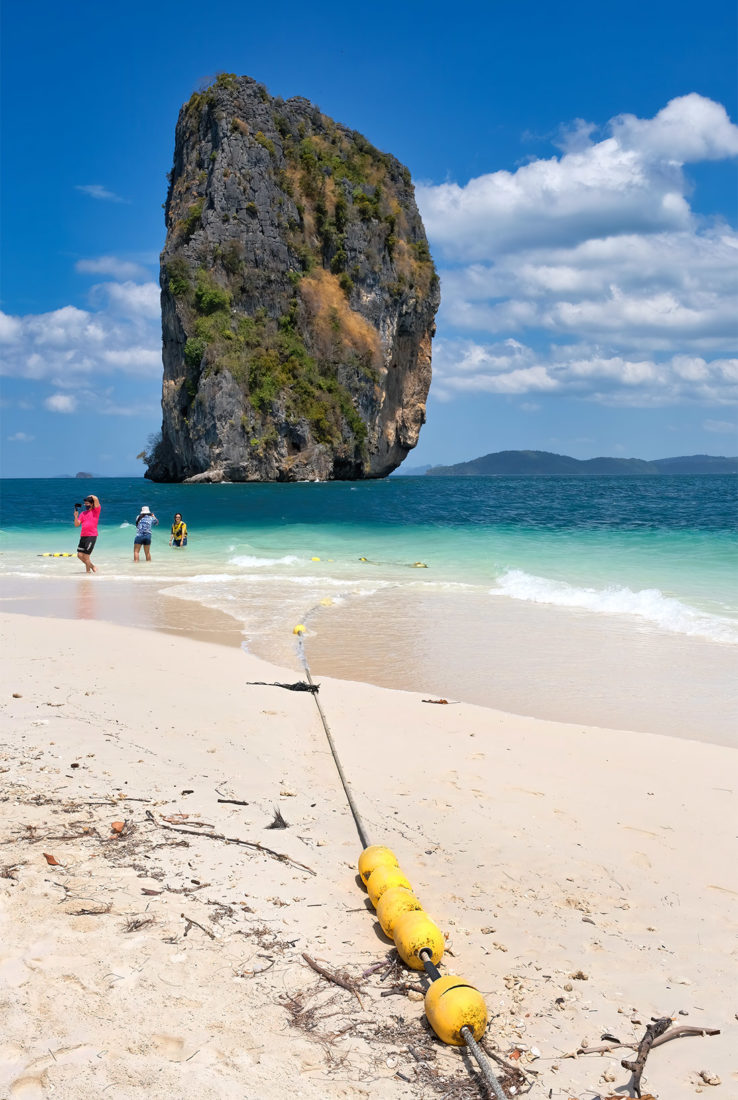
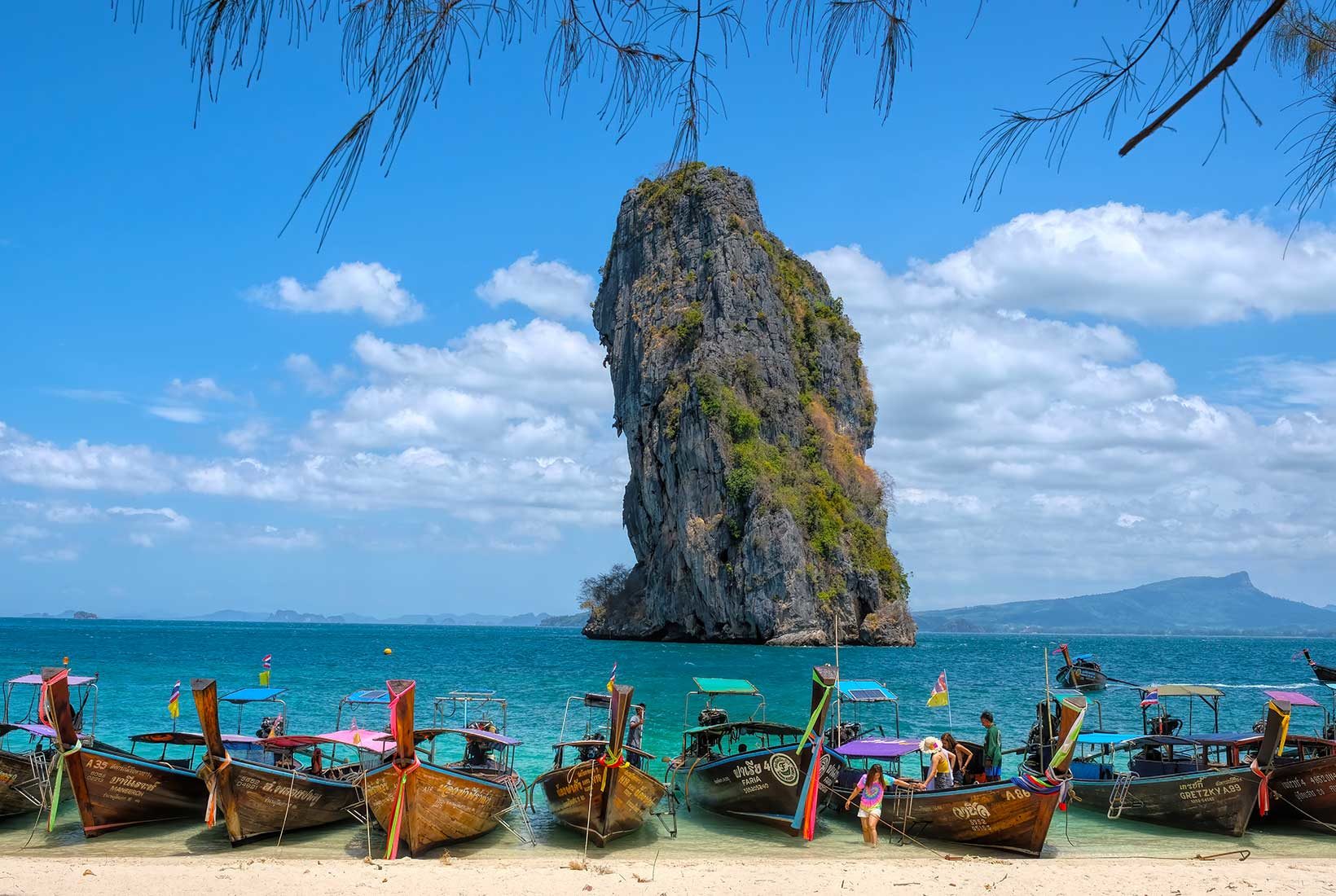
After lunch we motored past Koh Po Da Nok (there’s no mystery why it is commonly referred to as Chicken Island). The captain turned off the motor and invited passengers to come forward to take selfies with the bony chicken neck in the background. I learned later that he was just killing time, waiting for low tide. Our next two island stops were Koh Tup (sometimes spelled Koh Tub) and Koh Mor (Koh Mu). When the tide is at its lowest, a sandbar connects these two tiny islets, allowing visitors to walk between them.
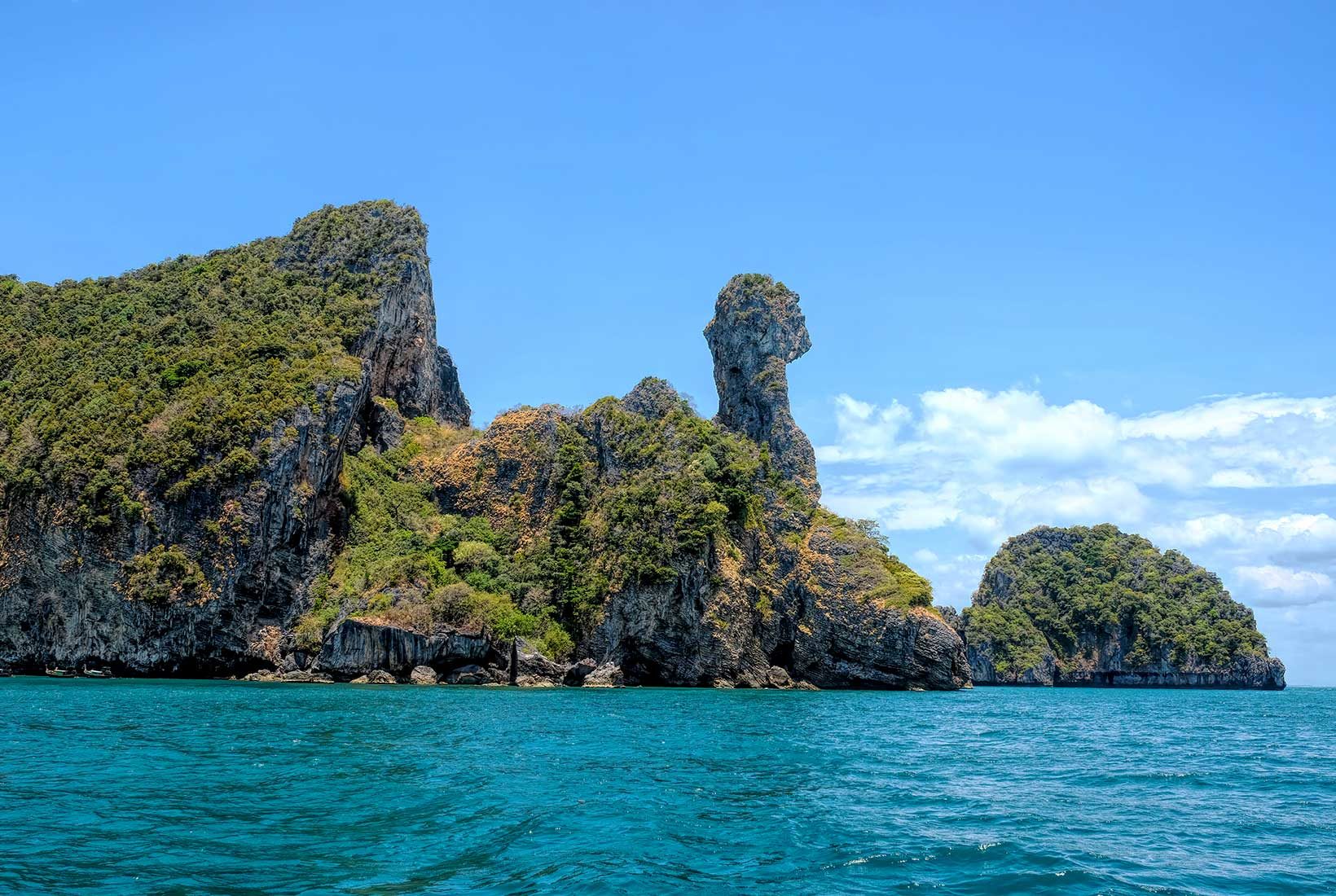
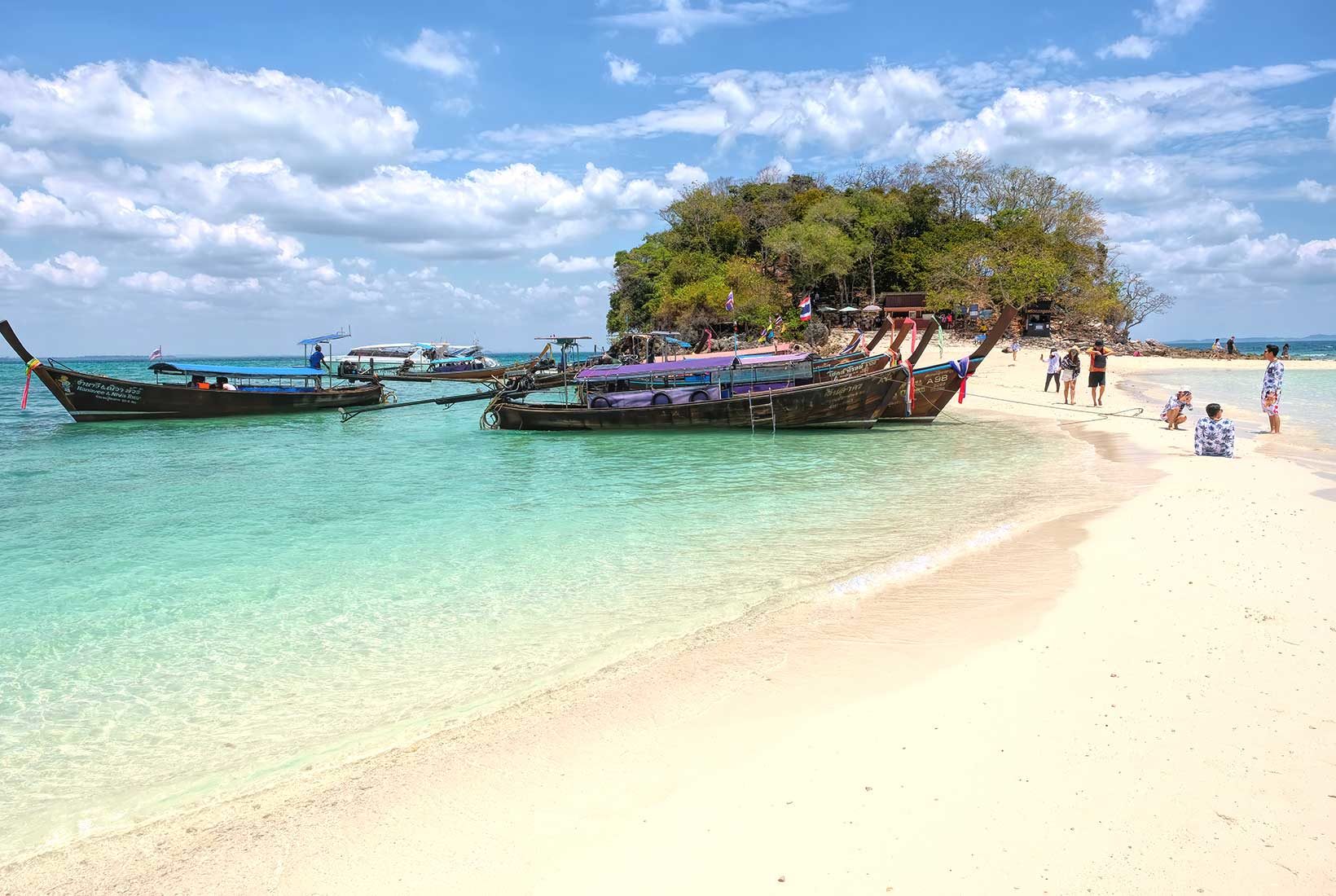


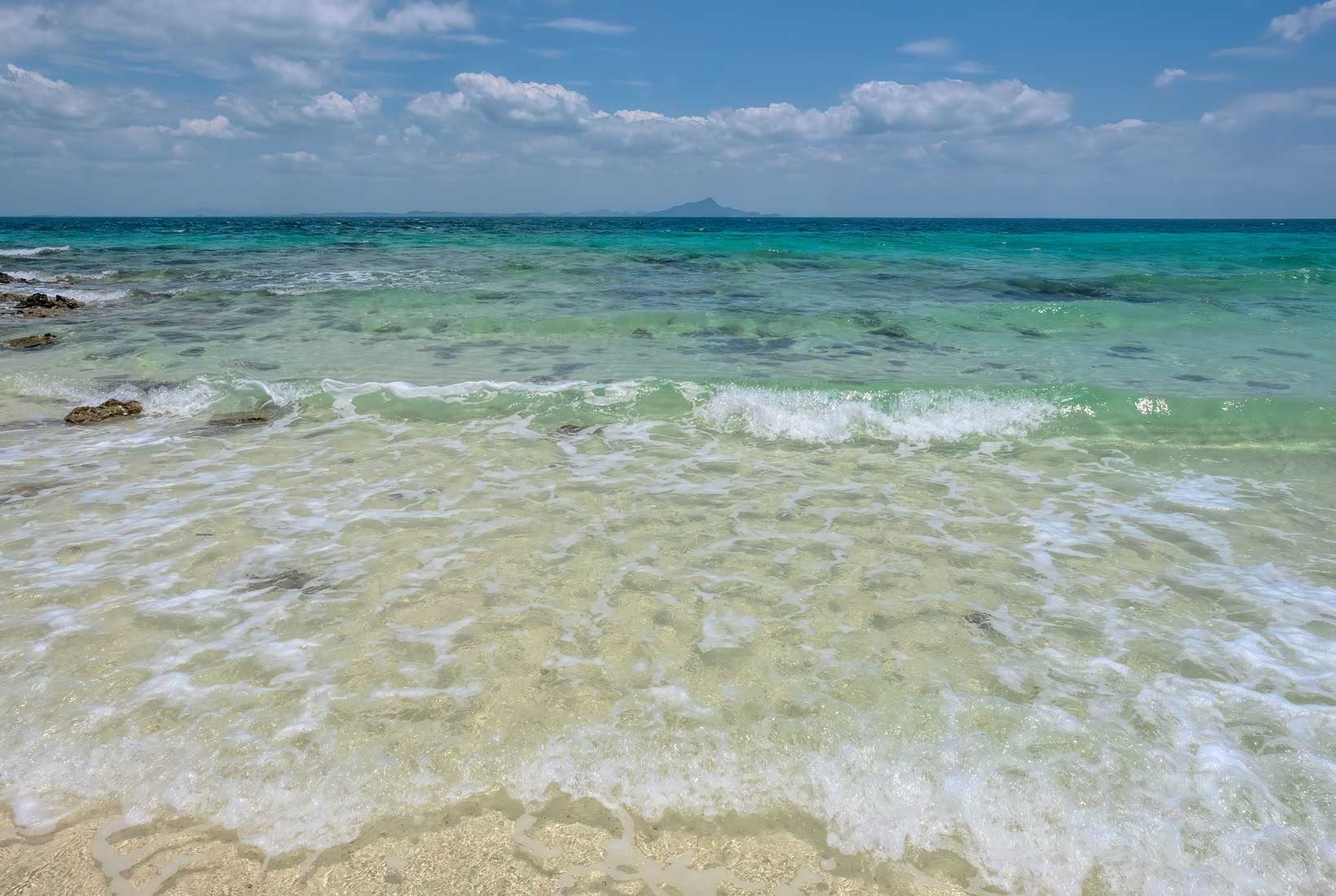
After a few days of lounging around I was itching for something more exciting to do. I trekked back to the eastern side of the peninsula and followed a concrete walkway to Phra Nang Beach. This is where rock climbing students go to test their new skills. I watched in fascination as climbers scaled near vertical walls polished smooth from thousands of hands and feet. In some cases, their toeholds and handholds were little more that bumps the size of a large marble.
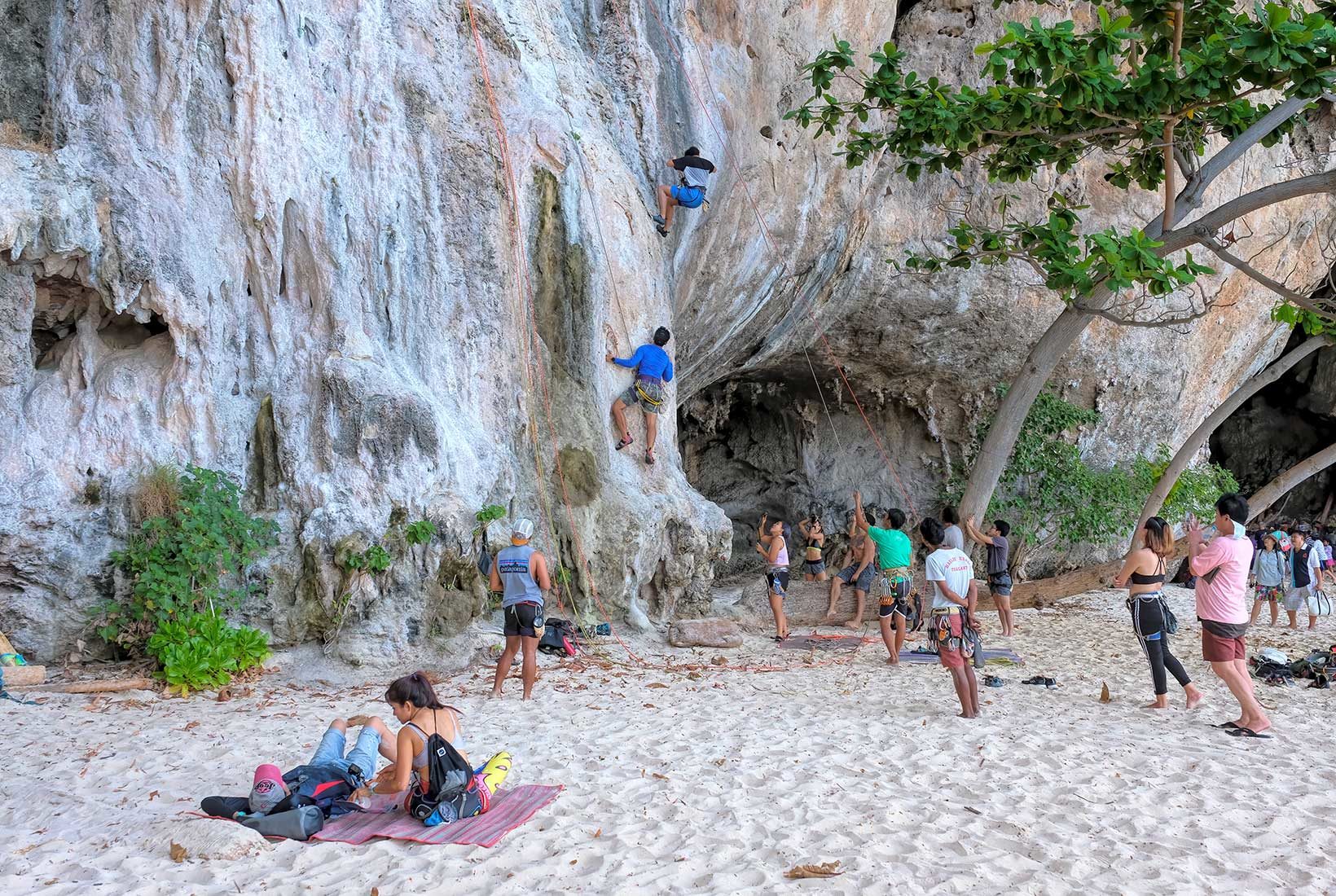
Beyond the climbing walls, Phra Nang Cave is tucked into a small grotto at the end of the beach. I noticed wood carvings piled on either side of the altar inside the cave, but it wasn’t until I stepped inside that I realized they were carvings of penises. Mounds of penises, in every shape and size. Some of the wood carvings had been left to weather and splinter, while others had been painted in garish lacquered colors. I watched as Thais entered the cave with candles or incense, knelt before the altar and said a prayer. How bizarre, I thought. Whatever could they be praying for?
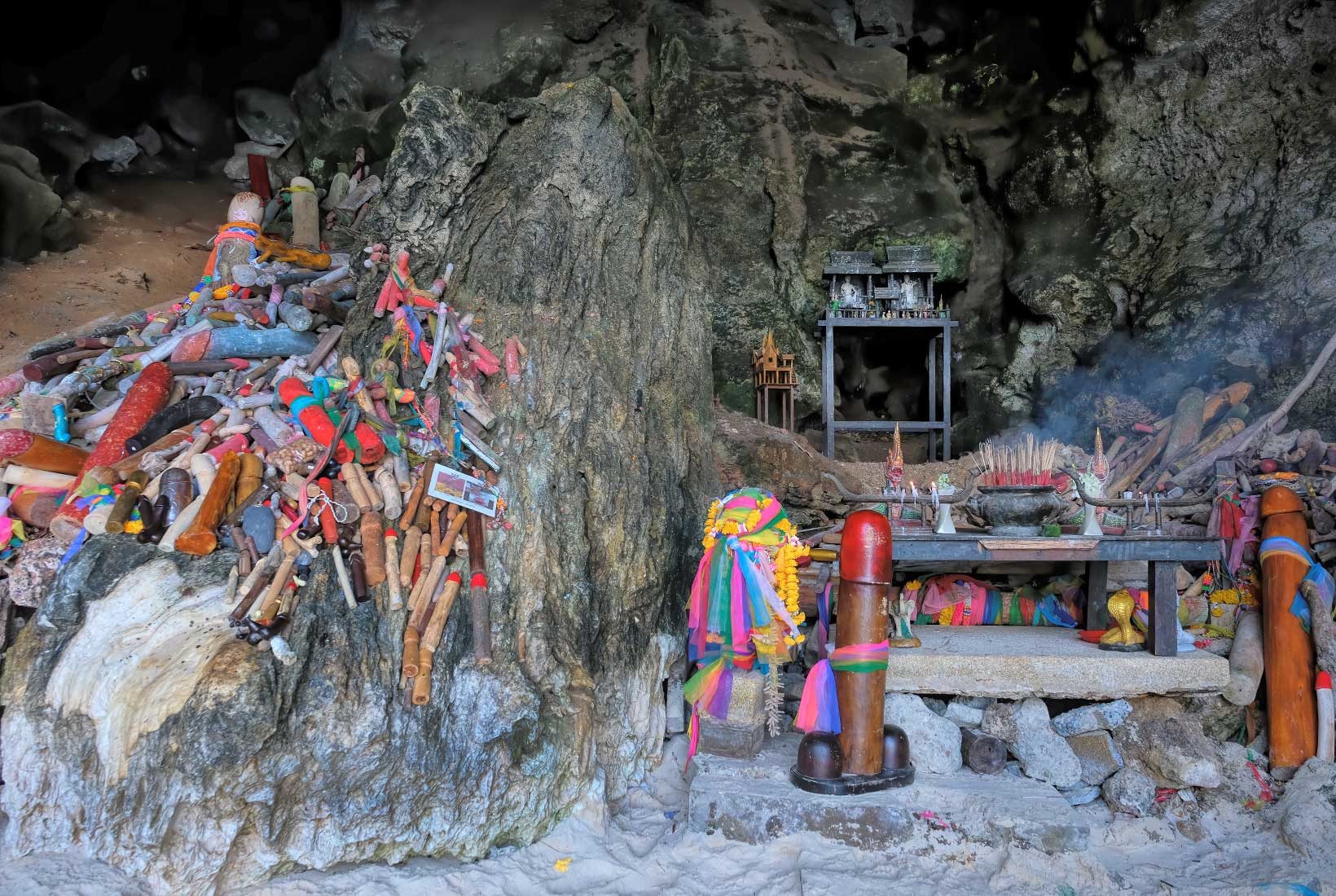
I later learned that, according to local legend, a beautiful princess had once lived in a castle that stood on the site. Many men vied for her affections but she remained indifferent. One day, a young man from Chicken Island proposed to her but she refused. When the young man tried to take her away by force, another man from Naga island appeared and saved the maiden. In turn, she agreed to marry him. On the wedding day, an angry group of rival suitors arrived and picked a violent fight with the groom. A hermit living in a nearby cave came out and tried to stop the fight but no one listened to him. Left with no other options, the hermit turned the scene into stone. The maiden became Phra Nang Cave and the groom became Chicken Island. Other men became Poda Island, Horn Nak Island, and Hang Nak Island. The tray carrying the groom’s dowry sank into the sea and emerged as Happy Island, a sea stack just offshore of Phra Nang Beach. Perhaps Thais who visit the cave are praying for a more successful marriage that that of the princess. But the reason for the piles of carved penises remains a mystery.
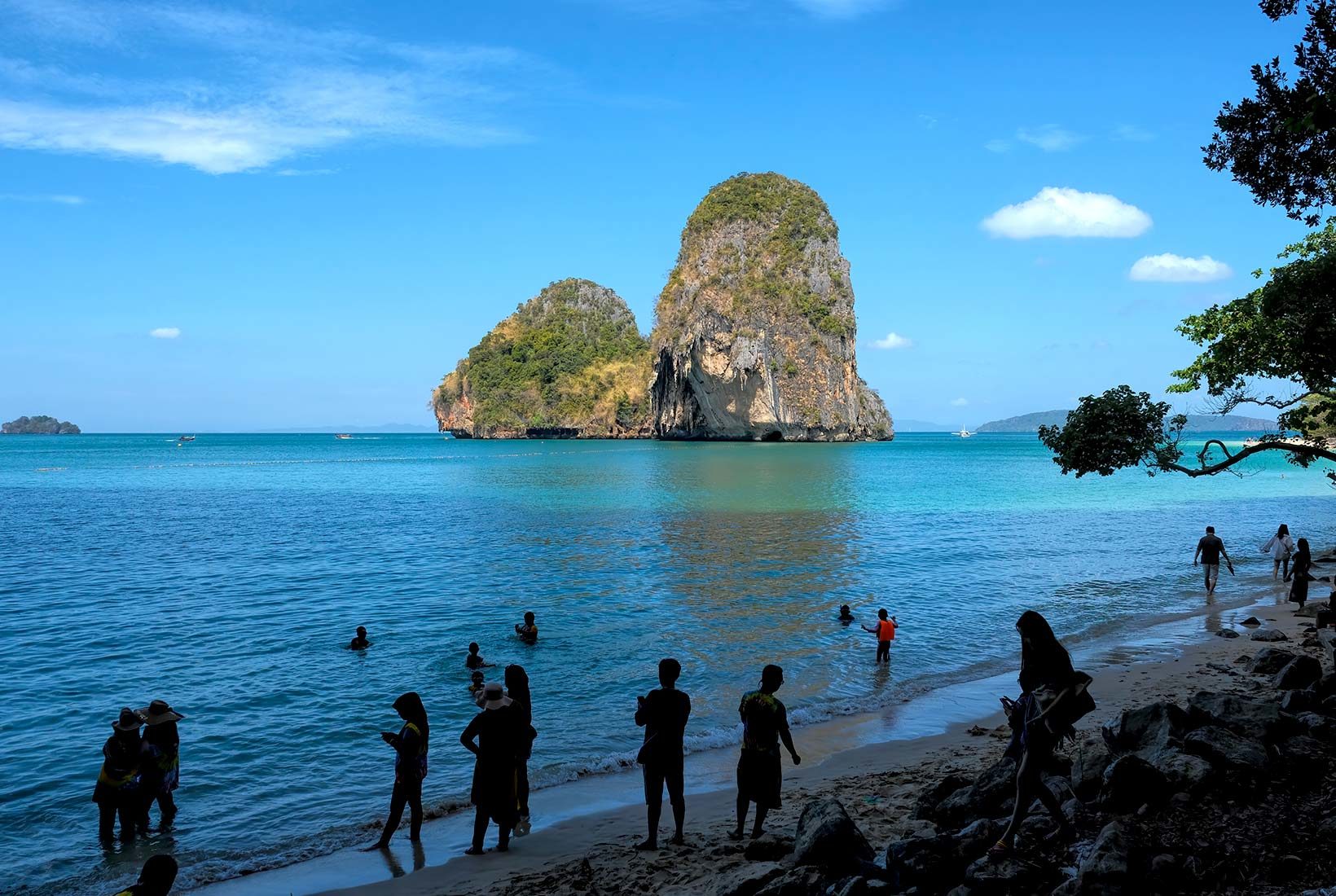
On my final day at Railay Bay Resort I solved a different mystery. The evening I checked in, the bellboy had cautioned me against leaving the doors to my balcony open. He pointed to a decal on the window, which depiced a monkey stealing guest’s possessions. All week I’d been looking for monkeys, to no avail. I’d dismissed it as a myth until my last night, when I suddenly heard a ruckus in the treetops outside my room. Sure enough, a pack of Spectacled Langurs were tossing rotten fruit on guests walking to dinner. It was the perfect ending to a perfect holiday.
